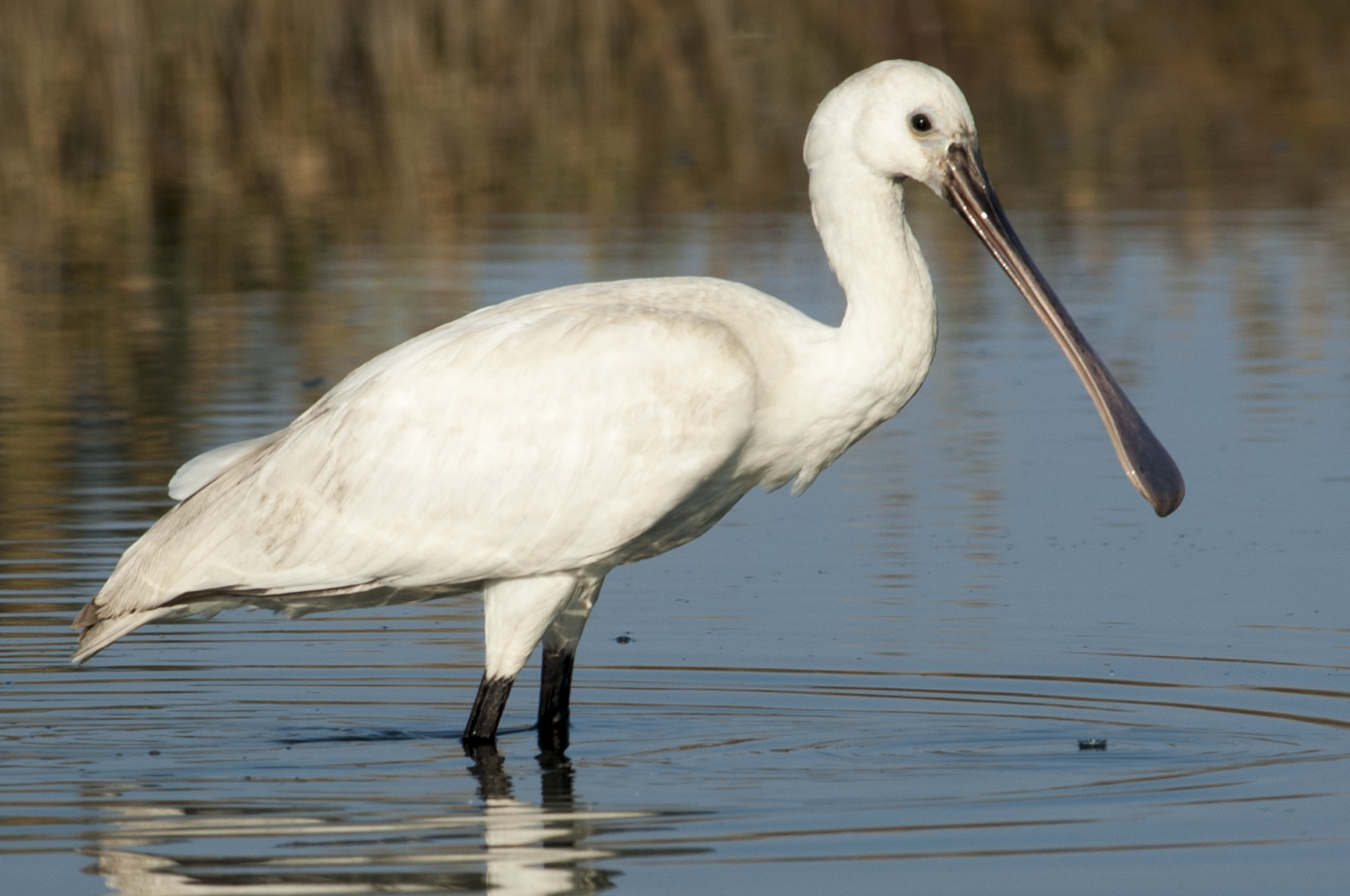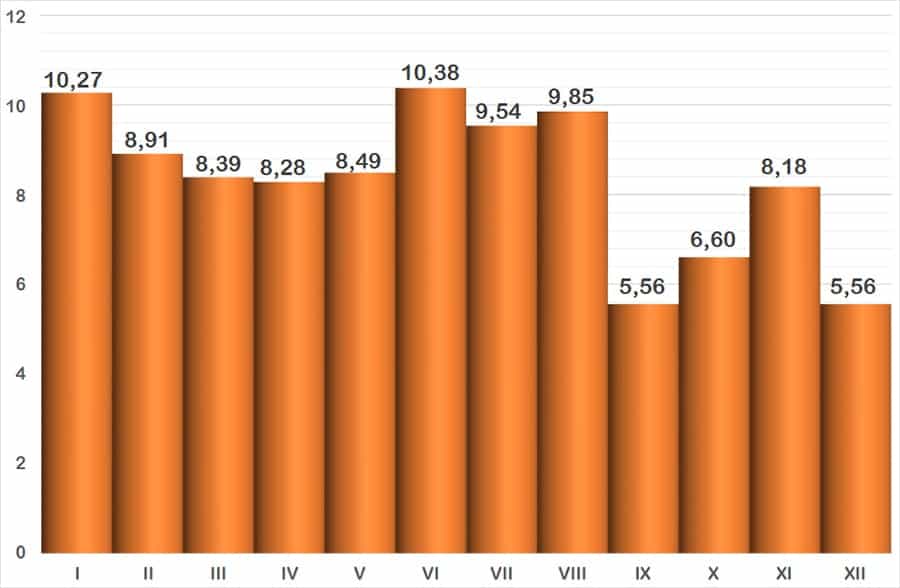It is an unmistakable bird because of its large size, white colour, and its characteristic spatula-shaped bill, from which it gets its name. In the summer season adults have an ochre spot at the base of the neck and the front end of the bill also has a yellowish spot. It usually flies in groups with its neck extended.

Species 1
Eurasian Spoonbill
Scientific name
Family 2
Taxonomic Affinity Group 3
Phenology 4
Considered vulnerable in Spain, it nests in about five colonies in the country and is present throughout the year. In the ‘Cerrillos’ salt flats it is observed throughout the year, the best months being from January to August, becoming more common during the summer.

The graph represents the probability of seeing a species during the year, grouped into months. The vertical axis indicates the percentage value. Each of the bars expresses its value. The horizontal axis represents the months: I = January, II = February, III = March, IV = April, V = May, VI = June, VII = July, VIII = August, IX = September, X = October, XI = November and XII = December.
Observation recommendations
It is easily observed in the ‘Salinas Nuevas’ resting on the islets of vegetation and it is not difficult to see it feeding in the ponds of “Cerrillos”.
Observation areas where we can find it
Notes
[1] The names used are from the list of birds of Spain, drawn up by SEO/BirdLife and updated to 2019 (https://seo.org/listaavesdeespana/). The reference is: Rouco, M., Copete, J. L., De Juana, E., Gil-Velasco, M., Lorenzo, J. A., Martín, M., Milá, B., Molina, B. & Santos, D. M. 2019. Checklist of the birds of Spain. 2019 edition. SEO/BirdLife. Madrid.
[2] The taxonomic family to which it belongs is indicated.
[3] Traditionally, waterbirds have been grouped according to their taxonomy or “taxonomic affinity”, i.e., when some birds coincide in certain features that allow them to be classified scientifically, but without leaving the rigour of science, they are put together in these groups so that they can be easily recognised. These groups are the following: Greves (belonging to the Podicipedae family), Herons and Similar (includes the families: Ardeidae -Herons- Ciconiidae -Storks- and Threskiornithidae -Ibises and spoonbills-), Ducks (the whole Anatidae family), Coots and Similar (the family Rallidae corresponding to Rails, Gallinules and Coots), Cranes (also with only one family, the Gruidae), Waders , a heterogeneous group, the most diverse of this classification, includes the families Burhinidae (Stone-curlews), Haematopodidae (Oystercather), Recurvirostridade (Avocets and Stilts), Glareolidae (Pranticole), Charadriidadea (Plovers), Scolapacidae and finally Gulls and Similar (the recently unified family Laridae, i.e. Gulls and Terns).
[4] Phenology studies the relationship between the cycles of living beings and meteorological factors, and in our latitude these factors manifest themselves as variations throughout the year, thus relating the seasons to the birds’ cycles (breeding, migratory journeys, etc.) The graph shows the probability of seeing a bird depending on the month. It uses data from 48 bird censuses carried out between October 2016 and September 2018. The method used is that of a census route with sampling stations, with a total count on the sheet of water.
